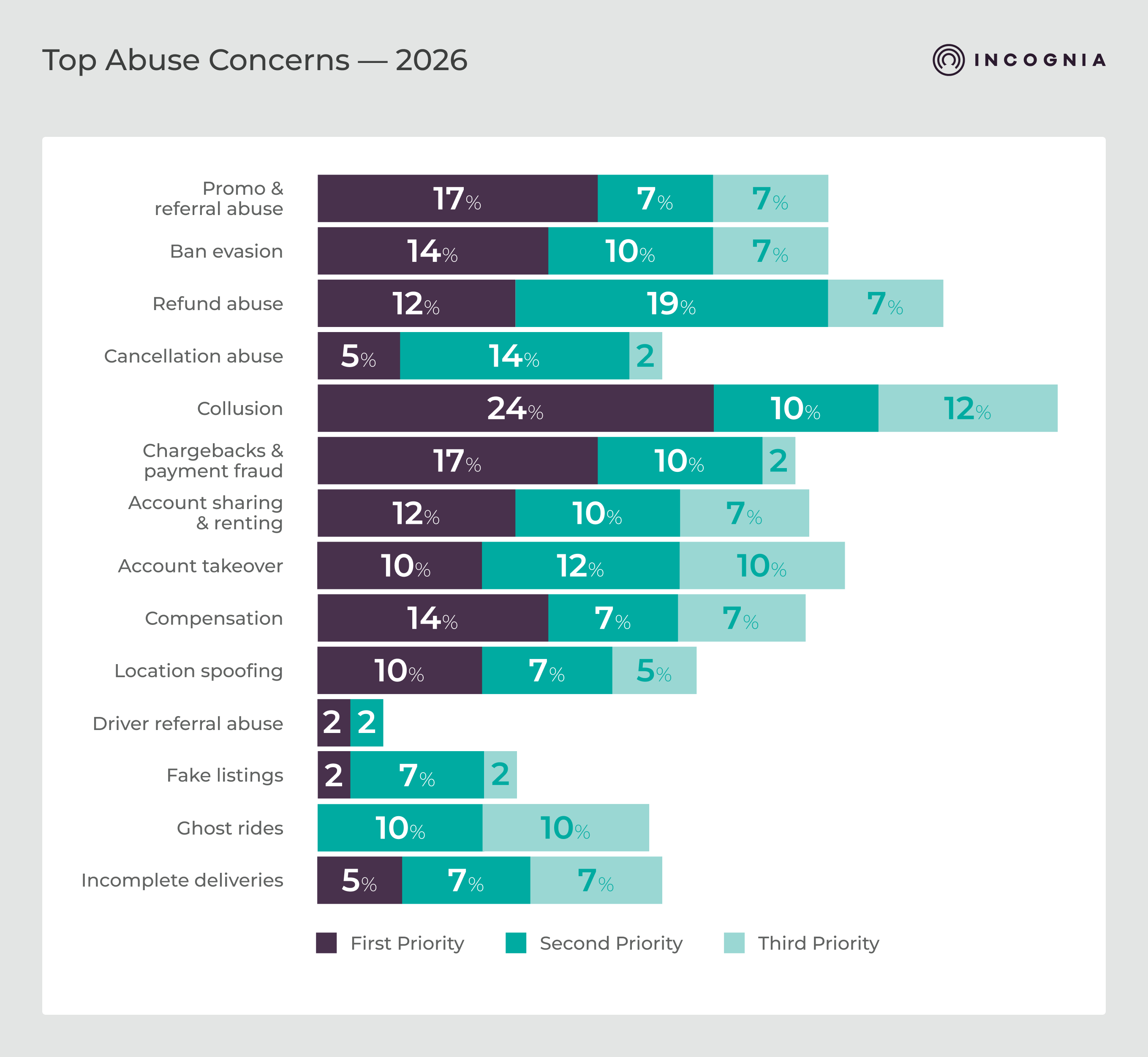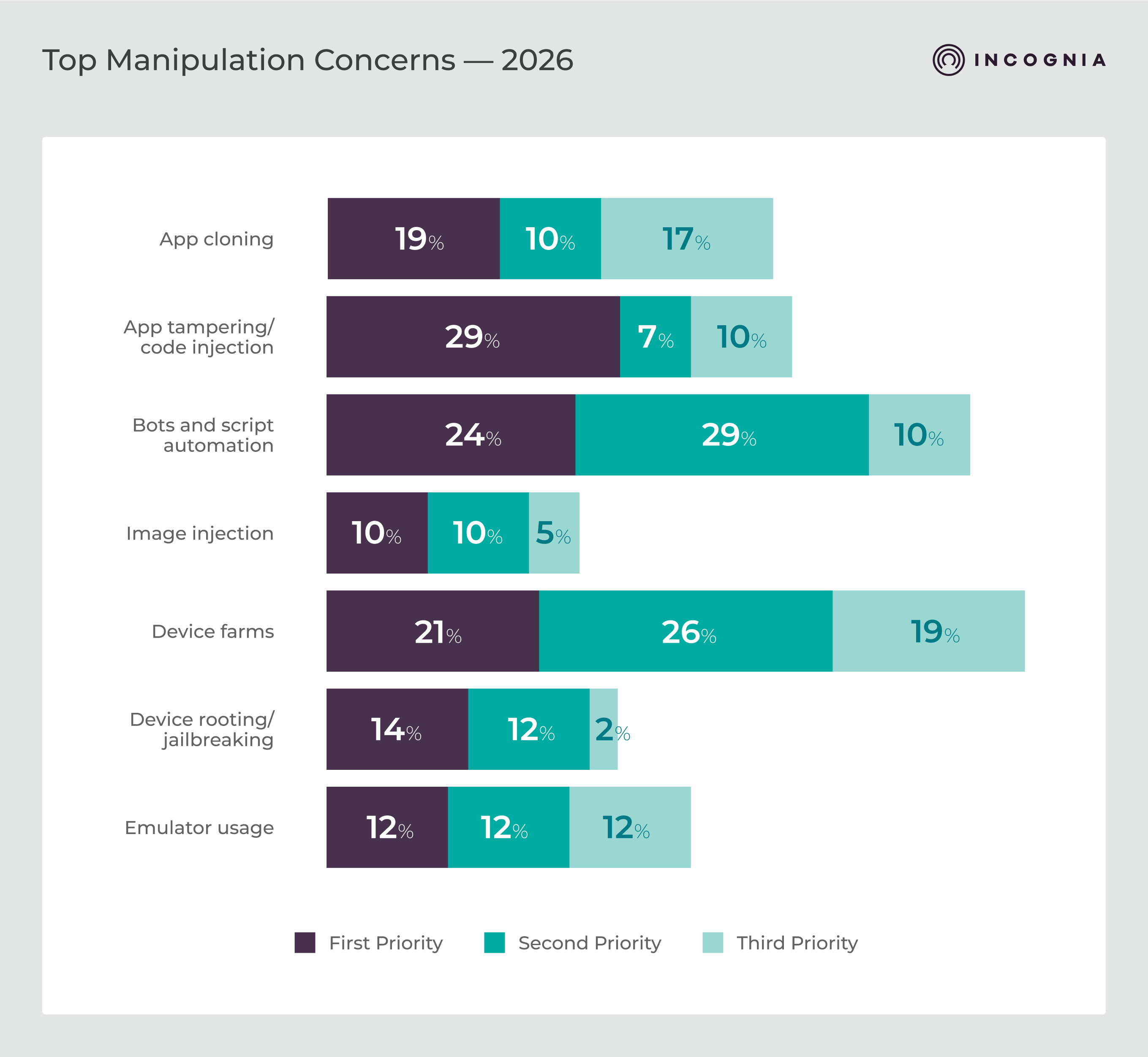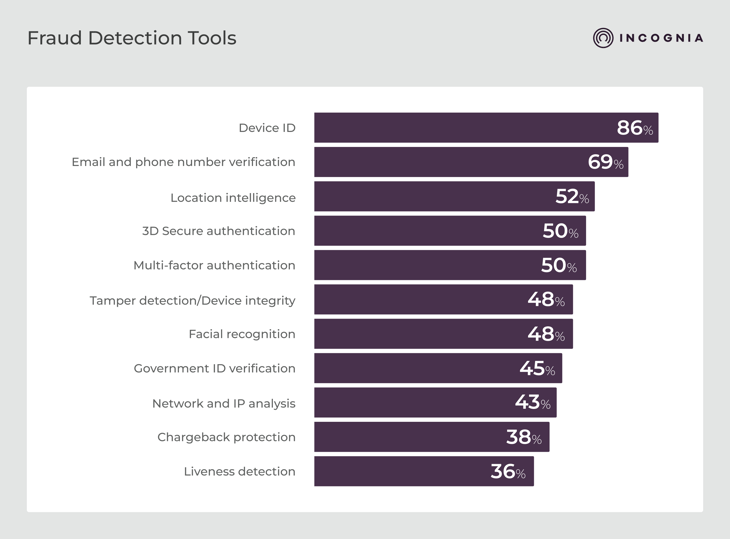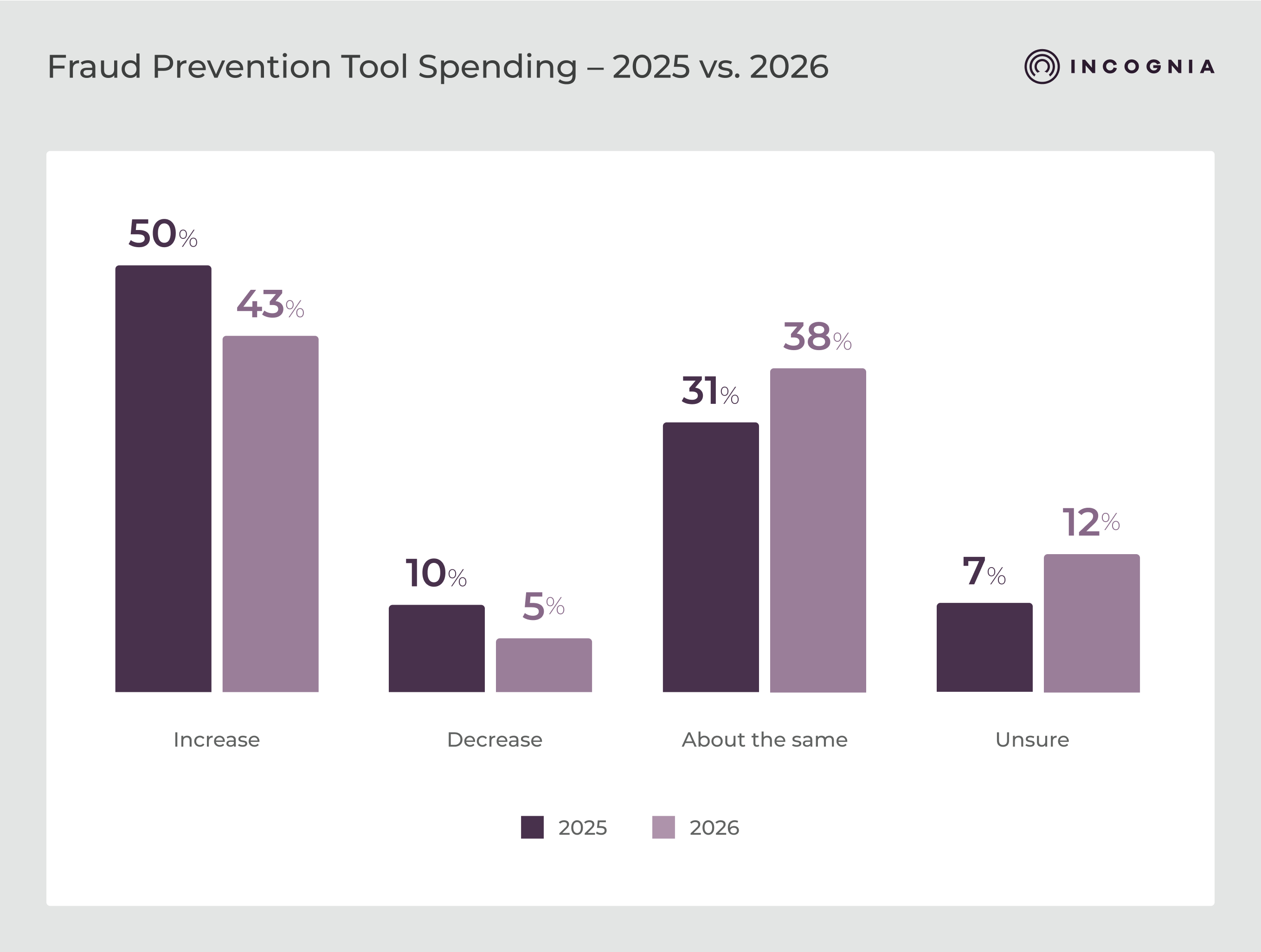- Blog
- The Gig Economy Fraud Trends to Know for 2026
The Gig Economy Fraud Trends to Know for 2026
The top fraud trends shaping 2026 include rising collusion concerns, app tampering fueled in part by Fraud-as-a-Service (FaaS) tools, uneven adoption of tamper detection, and steady fraud prevention budgets. These insights come from Incognia’s State of Fraud in the Gig Economy report, based on responses from fraud and risk leaders across global gig economy platforms.
Subscribe to Incognia’s content
Fraud doesn’t stand still, and neither do the people fighting it.
Our State of Fraud in the Gig Economy report—built from insights shared by fraud, risk, and operations professionals across global delivery and ride sharing platforms—reveals how teams are preparing for faster, more automated, and harder-to-detect attacks in 2026.
By combining survey data with expert analysis from Incognia’s fraud specialists, the report uncovers how tactics are shifting and where teams are focusing next.
These are the top fraud trends shaping the gig economy in the year ahead—straight from those on the front lines.
Collusion is the top fraud concern heading into 2026
Even industry experts were surprised to see collusion as a top priority, with 24% of fraud leaders naming it a leading concern for both 2025 and 2026.

Unlike chargebacks or promotion abuse, collusion doesn’t leave an obvious trail. Its complexity comes from connecting multiple interfaces—driver, consumer, merchant—into one hidden fraud chain.
This emphasis on collusion’s persistence may be related to a significant operational challenge: some platforms still manage each user type in separate systems. Without cross-role risk visibility or shared device intelligence signals, collusion slips through the cracks.
Solving collusion requires breaking down silos. Using a consistent device ID and location intelligence layer across user types helps link connected accounts in real time and expose coordinated abuse.
App tampering is a fast-growing manipulation concern
App tampering and code injection is the leading manipulation concern for 2026, cited by 29% of respondents as a top priority.

Sophisticated attacks are no longer confined to technical experts. Fraud-as-a-Service (FaaS) vendors now sell ready-made software that makes it easy for anyone to tamper with apps — injecting code, cloning apps, spoofing GPS data, or bypassing in-app security with just a few clicks.
What was once a technically complex exploit is now often a productized service. As a result, tampering has become the backbone of industrialized fraud, powering scripted account creation, credential testing, and other repetitive abuse flows at scale.
App tampering has gone mainstream. It’s no longer reserved for tech-savvy fraudsters. In a FaaS world, tamper detection isn’t a nice-to-have—it’s the safeguard that keeps every other fraud signal trustworthy.
Despite rising tampering concerns, tamper detection remains underused
Even as app tampering rises to the top of the fraud agenda, fewer than half of respondents—just 48%—reported that their platform uses tamper detection as part of their fraud prevention stack.

That gap leaves the door wide open for fraudsters. Once a device or app has been tampered with, its signals can no longer be trusted. Device ID, identify verification, location intelligence, behavioral data—all of it loses integrity. Every layer of the fraud stack built on those compromised signals starts to crumble.
Tamper detection is designed to close that gap. By verifying the integrity of the device and confirming that the app hasn’t been modified, tamper detection ensures that every other fraud signal can be trusted. But instead, many teams continue to depend on outdated device ID systems and surface-level signals that are missing what’s really happening on the device.
The outcome? An industry that’s increasingly aware of app manipulation, yet still underprepared to catch it.
Without tamper detection, even the best device ID, facial recognition, or location solution becomes unreliable.
Fraud prevention tool budgets are holding steady into 2026
Most respondents report stable or increasing spending on fraud prevention tools heading into 2026, and very few expect cuts.

That’s good news—it may indicate that fraud prevention isn’t being deprioritized. But steady spend doesn’t necessarily mean teams are fully resourced.
For some, these increases may be catch-up investments, not ahead-of-the-curve growth. Even as spending rises, fraud stacks may still lag behind the sophistication and scale of modern fraud.
The real challenge is proving ROI. The fraud team is commonly seen as protecting revenue rather than contributing to it, which makes it hard to tie results to profit.
That’s why advocacy is a key skill for fraud leaders—the ability to show that prevention is not just risk reduction, but also a driver of efficiency and profitability.
The big picture for 2026
Fraudsters are always looking for faster, more automated, and harder-to-detect tactics.
From app tampering and FaaS tools to collusion and device farms, bad actors are scaling their operations while many platforms are still catching up.
The data points to a strategic path forward—greater visibility to counter collusion, stronger app integrity through tamper detection, and continued advocacy for fraud prevention as a growth enabler, not just a cost of doing business.
For a deeper look at the data behind these trends—and how platforms are preparing for what’s next—read the full State of Fraud in the Gig Economy report.




